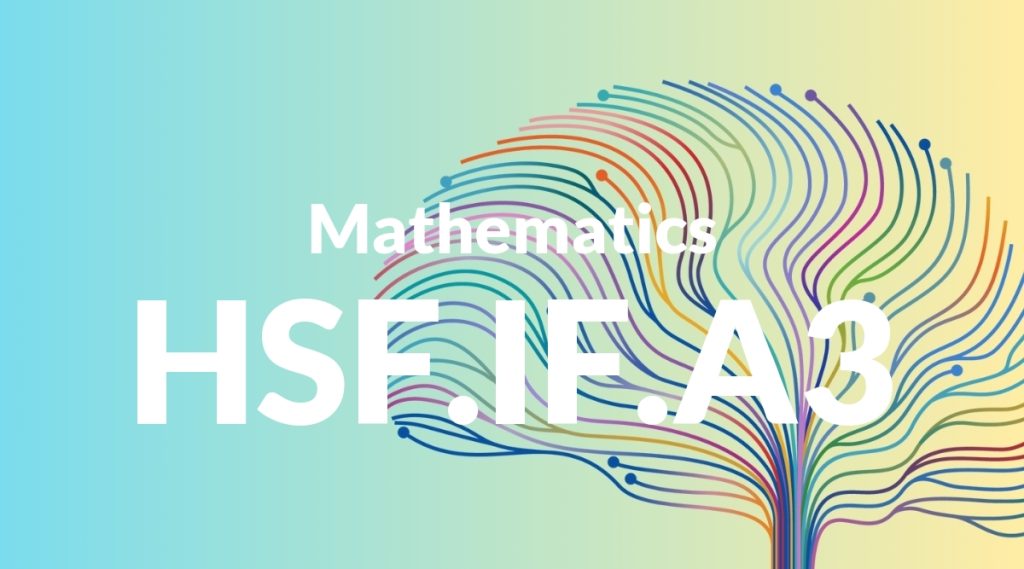Standard: HSF.IF.A3 – Recognize that sequences are functions, sometimes defined recursively, whose domain is a subset of the integers. For example, the Fibonacci sequence is defined recursively by f(0) = f(1) = 1, f(n+1) = f(n) + f(n-1) for n ≥ 1.
Grade level: High School: Functions
Subject: Mathematics
Domain: Interpreting Functions
Teacher Overview
This standard emphasizes the recognition of sequences as functions, particularly those defined recursively. Understanding this concept is crucial for students as it bridges their knowledge of basic functions with more advanced topics like calculus and discrete mathematics. It also provides a foundation for real-world applications in various fields such as computer science, biology, and finance. Students should be comfortable with basic functions and sequences, including arithmetic and geometric sequences. They should also understand integer properties and have prior experience with simple recursive processes.
By mastering this standard, students will be equipped to tackle more complex mathematical concepts, such as advanced calculus and discrete mathematics. They will also develop problem-solving skills applicable to real-world scenarios, enhancing their overall mathematical literacy.
Common Misconception 1
A common misconception is that all sequences are either arithmetic or geometric. This is incorrect because sequences can be defined in various ways, including recursively. Recursive sequences follow a specific rule that relates each term to previous terms, which is different from the fixed patterns of arithmetic and geometric sequences.
Intervention 1
To address this misconception, provide diverse examples of sequences, including recursive ones. Use visual aids and interactive activities to help students see the differences and similarities between these types of sequences.
Common Misconception 2
Another misconception is that recursive definitions are inherently complex and hard to grasp. While some recursive sequences can be intricate, many are quite simple and intuitive once broken down. The Fibonacci sequence is a prime example of a straightforward recursive sequence.
Intervention 2
Combat this misconception by starting with simple recursive sequences and gradually increasing complexity. Use clear, step-by-step explanations and encourage students to practice with various examples to build their confidence and understanding.
Prerequisite Knowledge
Students should have a foundational understanding of basic functions, sequences, and integer properties. Familiarity with simple arithmetic operations and prior exposure to linear and non-linear functions will be beneficial.
Subsequent Knowledge
After mastering this standard, students will be able to analyze and construct more complex recursive sequences, apply these concepts to real-world problems, and understand advanced topics in calculus and discrete mathematics.
Instructional Activities
- Create a visual representation of different types of sequences, including recursive ones.
- Engage students in a hands-on activity to construct the Fibonacci sequence.
- Use computer software to model real-world problems with recursive sequences.
- Have students work in groups to identify and analyze sequences in nature and art.
- Assign problems that require students to define and solve their own recursive sequences.




